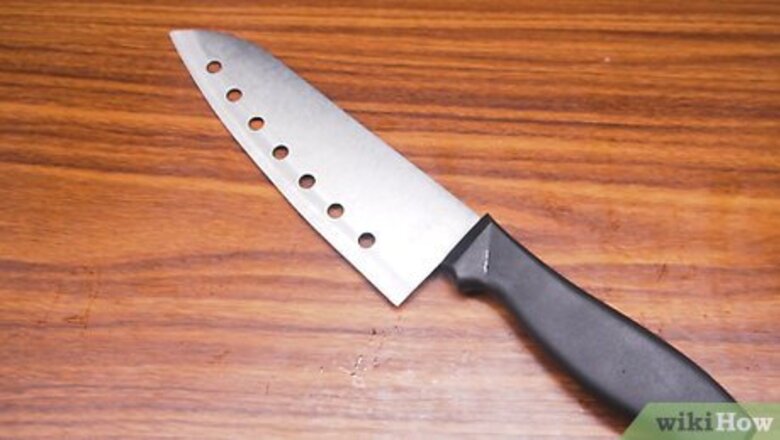
views
Slicing Chicken with a Knife
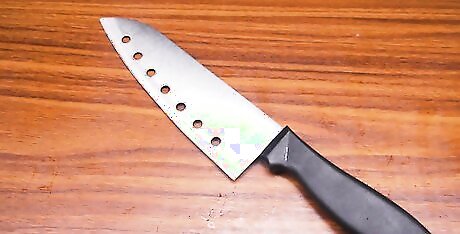
Choose a sharp chef's knife that’s 8 to 10 inches (20 to 25 cm) long. The sharper the knife, the less chance you’ll have of injuring yourself because the knife won’t slide around as much. A longer knife will help you make smooth, clean cuts instead of having to make repeated cuts like a shorter knife would. A chef’s knife is also sturdy enough to cut through meat with just a little bit of pressure. An easy way to sharpen a knife is with a knife sharpener. Press the knife blade into the side labeled as “coarse” and pull it towards you a couple of times, applying gentle pressure. Then pull it through the “fine” side. Chef’s knives vary greatly in price based on quality and materials. Shop around at a kitchen store or an online retailer to pick one that you like and that’s comfortable to hold.
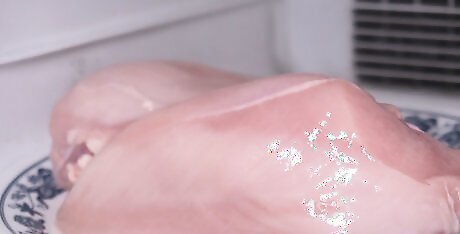
Place the chicken breast on a plate in the freezer for 15 minutes. Since raw chicken is very slippery, sitting it in the freezer before you cut it will help firm it up so it’s easier to handle. You don’t need to cover the breast and you can either leave it in the packaging or remove it first. If you don’t want to wait for the chicken to get firm in the freezer, use a paper towel to pat the chicken dry before cutting. This won’t be as effective but will make the chicken a little less slippery.
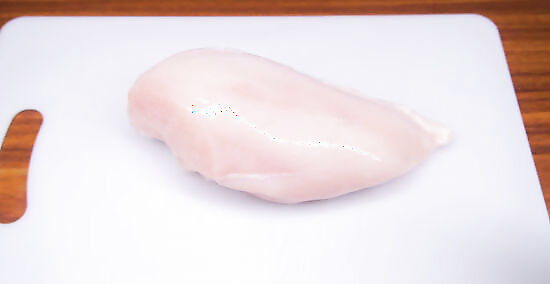
Transfer the chicken breast to a cutting board. Remove the breast from the freezer and slide it off the plate onto the cutting board or use your hands to pick it up and set it down. It helps to place the breast towards the center of the cutting board. If it slides around at all, it will stay on the cutting board instead of slipping off onto the counter and potentially infecting it. If you use your hands to pick up the chicken and move it to the cutting board, don’t touch anything besides the cutting board, chicken, or knife. Raw chicken can have bacteria which you don’t want to spread around the kitchen. Use a separate cutting board for chicken to avoid contaminating other food.
Debone the chicken breast now if you are using a bone-in breast. Use the knife to trim around the ribs and breastbone, then pull the breast meat off the bone gently. Be sure to cut off the tendon at the bottom, too. Cut as close to the bone as you can without removing too much flesh from the chicken breasts.
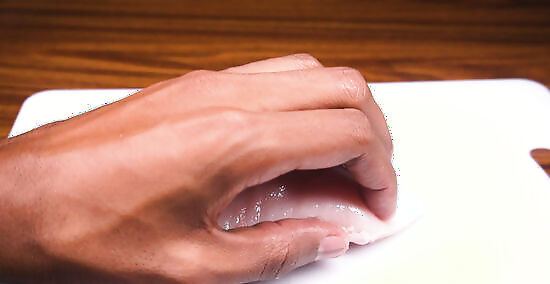
Hold the breast in place with your non-dominant hand. Use whichever hand you won’t be cutting with. Rest your palm firmly on the piece of chicken and curl your fingers slightly under your knuckles. This protects them from getting cut by the knife as you slice. For people who are prone to injury or don’t trust themselves with a super sharp knife, buy a pair of cut-resistant gloves online or at a kitchen store. They’re made from the same material as bulletproof vests and will keep your hands cut-free.
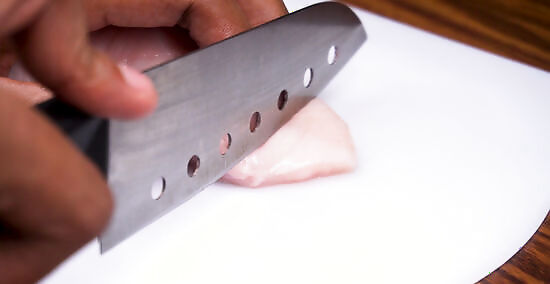
Slice the chicken against the grain. Find the grain (the tiny white muscle fibers) and cut across it, instead of parallel to it. If the grain runs up and down, cut left to right. Make a long stroke with your knife, dragging it through the breast in one clean slice. Cutting against the grain makes your chicken more tender once it’s cooked.
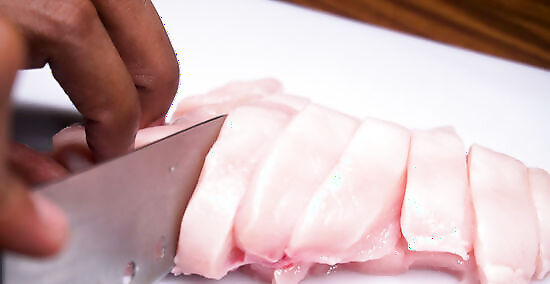
Continue cutting uniform strips until you finish the breast. Make your strips as thin or as thick as you’d like, but keep them all equal size so that they cook evenly. Depending on the width of your strips, 1 chicken breast can yield anywhere from 5 to 7 strips. Determine how wide you want your strips based on what you're using them for. Fajitas, for example, use thinner strips that are about ⁄2 in (1.3 cm) wide whereas fried chicken strips should be cut 1 to 2 in (2.5 to 5.1 cm) wide.
Using Kitchen Shears
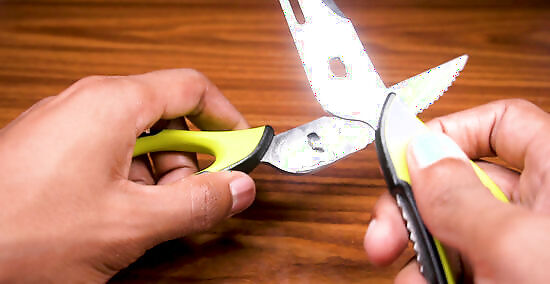
Choose a pair of detachable kitchen shears. Kitchen scissors are different from regular scissors in that they’re sharper and sturdier so they can cut through everything from meat to bone. Look for a pair that’s detachable (they may also be labeled as “2-piece”). With this type of scissor, you’re able to take the 2 halves apart to clean between the blades. Most kitchen shears cost between $10 and $20. Purchase them at a kitchen store or from an online retailer.

Place the raw chicken breast in the center of a cutting board. Even though you can hold your chicken breast in the air while you cut it, that’s not recommended. Putting it on a cutting board gives you more control over the breast and helps you make straighter cuts. Another option is to cut the chicken in the pan that you’ll be cooking it in. Since you are using scissors instead of a knife, you don’t have to worry about cutting into the pan and it makes for one less dish to clean up!
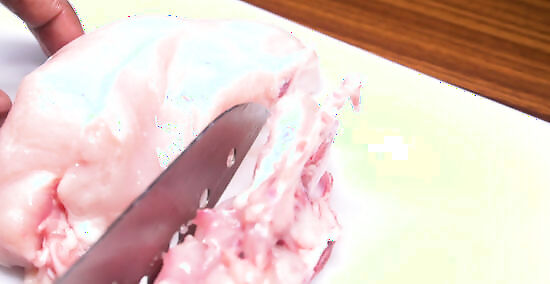
Debone the breast first before cutting it into strips. Make small cuts around the ribs and breastbone while using your fingers to pull the meat away from the bone. Then cut off the white tendon. It might be easier to use a boning knife for this. Feel along the underside of the chicken breast as you're cutting, follow the bone, and make sure you cut away all the bones.
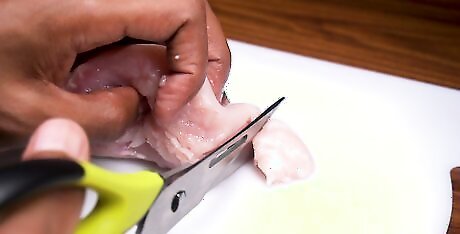
Find the grain of the breast and position the blade of the shears across it. The grain is the small white muscle fibers running through the chicken breast. You'll cut in the opposite direction, so you're intersecting the grain instead of cutting along with it. Cutting with the grain makes chicken chewier and tougher.
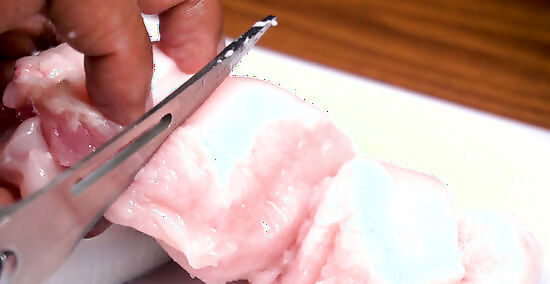
Cut even-sized strips with the shears, running the blade along the board. Use your non-dominant hand to hold the chicken in place on the cutting board while you use the other hand to cut through the breast with the shears. Lightly graze the cutting board as you cut to guide the shears through the meat in a straight line. Depending on how large the breast is, you’ll likely need to make multiple cuts per strip. If the breast is really thick, make small cuts to get all the way through the breast instead of trying to do it all in one cut.




















Comments
0 comment